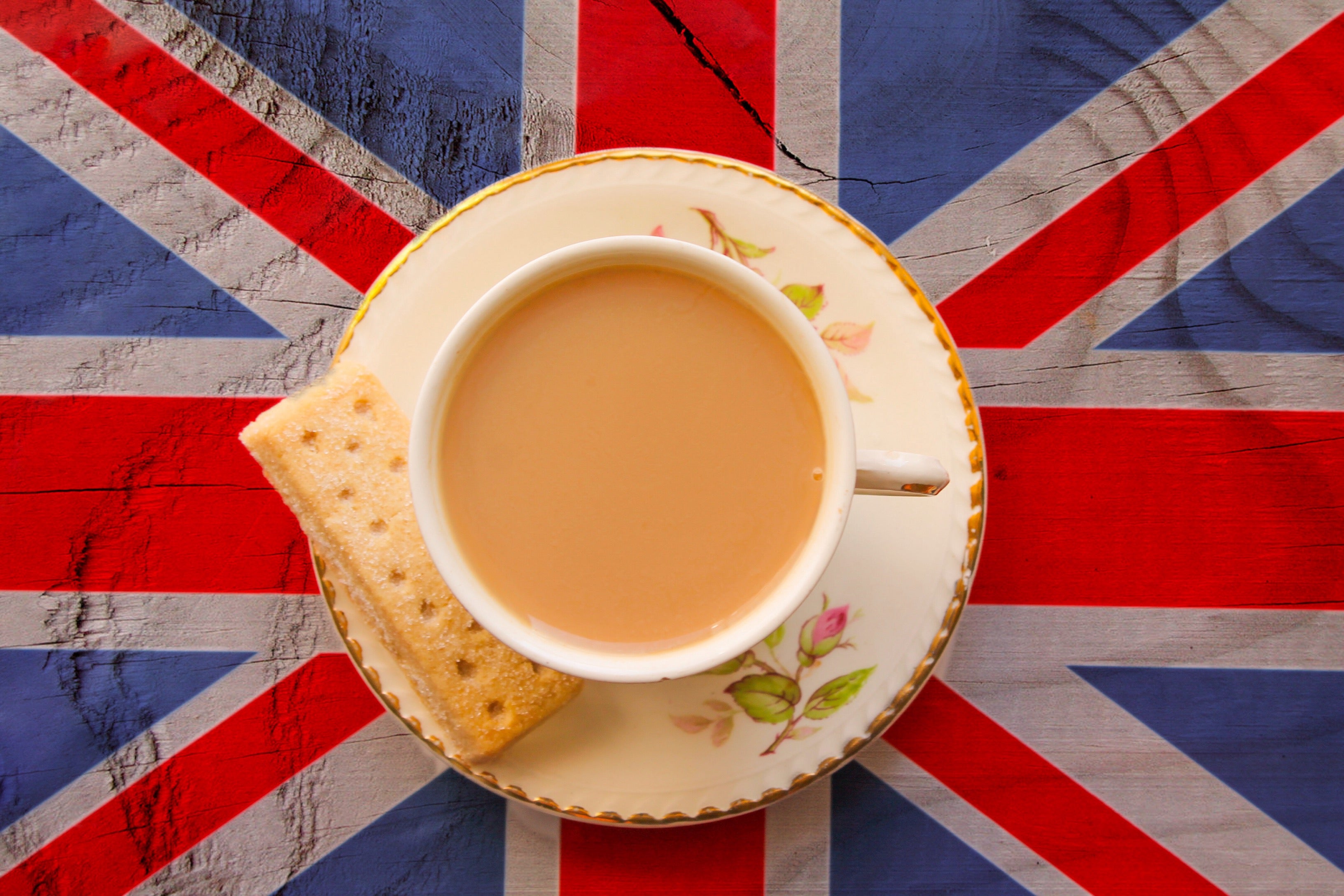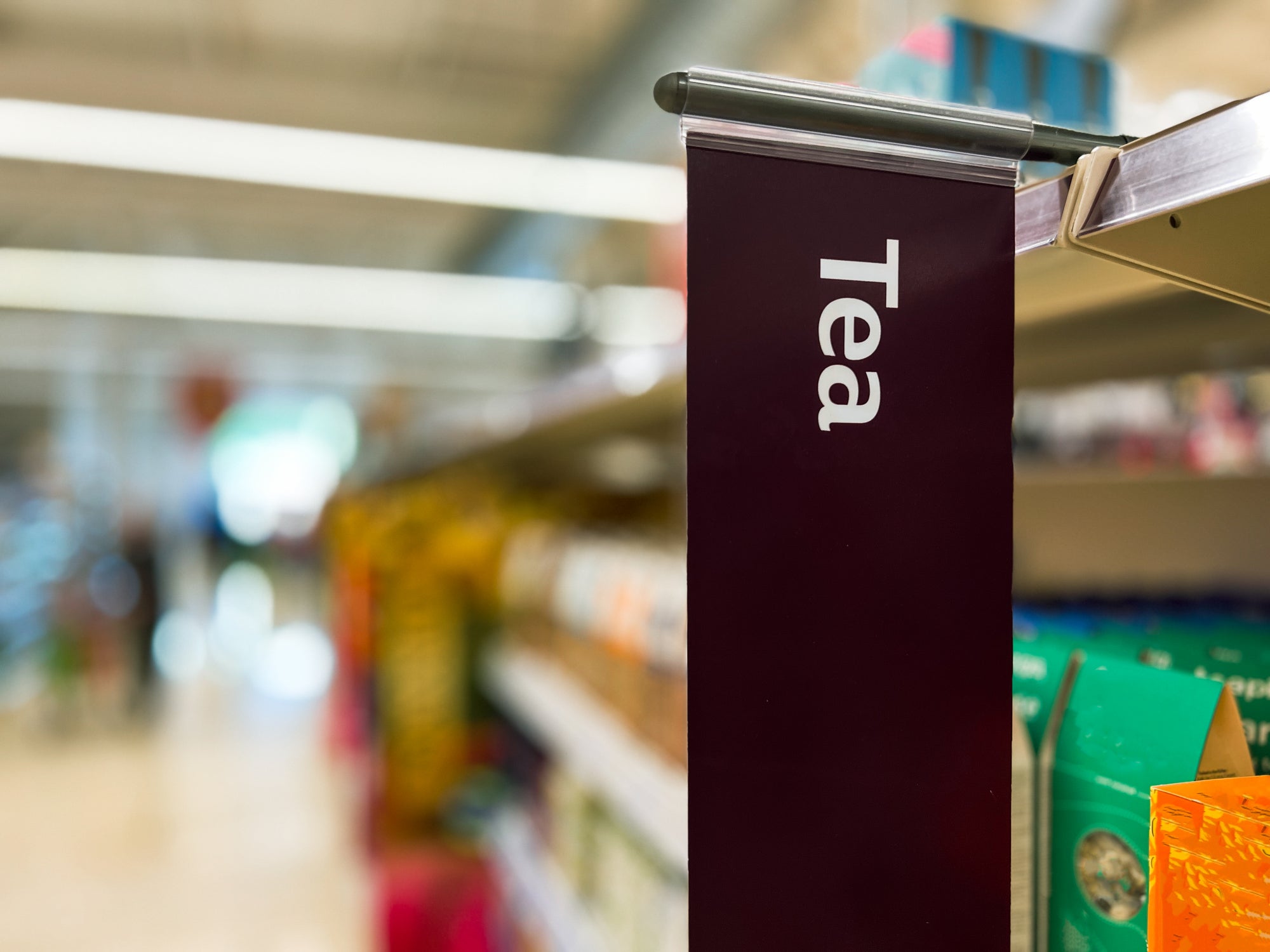Has Britain fallen out of love with tea? Typhoo’s troubles and the changing face of a national icon
Typhoo Tea’s financial woes could make it the latest casualty in a culture shift that’s seeing lattes and herbal blends take over from the builder’s brew. Can tea’s biggest brands adapt, or is the ritual of a proper cuppa becoming a thing of the past, asks Hannah Twiggs


Tea and Britain: a pairing so ingrained it feels inevitable, like Shakespeare and sonnets or the late Queen and corgis. For centuries, tea has been Britain’s greatest leveller, a balm for everything from heartbreak to hangovers. Whether it’s a builder’s brew in a chipped mug or something posher served in fine china, a cuppa is comfort, ritual and identity all in one.
And yet, something’s brewing – though it’s not what the old guard might want to hear. Typhoo Tea, the stalwart of kitchen cupboards since 1903, is teetering on the brink with administrators now circling. A shock? Hardly. Typhoo has been running on fumes for years, hit by dwindling sales, supermarket competition and, perhaps most dramatically, a £24m blow when trespassers ransacked its Merseyside factory in 2023. But the deeper crisis? Britain’s love affair with tea, once fervent and unquestioned, is showing cracks.
Look at the numbers. Black tea sales have fallen by over 20 per cent in the past decade. Those iconic red boxes aren’t the mainstays they once were. For the younger crowd, tea seems, well, boring – a relic of parents and grandparents. They’re not bothering with teapots and rituals. They’re grabbing coffees, herbal blends or anything that feels faster, trendier or better suited to their caffeine-fuelled health-obsessed lifestyles.
Coffee isn’t just competition anymore; it’s the usurper. A 2023 survey – admittedly by Italian home appliances brand, De’Longhi, purveyor of posh coffee machines – found that 56 per cent of Brits now prefer coffee over tea. Generationally, the gap is even starker. Gen-Zers (aged 18 to 27) are far keener on coffee than their elders, spending an average of £64.50 a month on it – more than twice the £28 spent by over-60s.
This younger cohort doesn’t just drink coffee; they’ve turned it into a hobby (and personality trait), with 87 per cent of Generation Z describing themselves as “coffee connoisseurs”, compared to just 66 per cent of those over 60. It’s no surprise that coffee’s glossy, on-the-go image screams ambition and modernity, dominating Instagram feeds, high streets and homes with the allure of espresso machines and single-origin blends. Meanwhile, tea – still fighting the stigma of a soggy tea bag – feels increasingly dated.
Adding to tea’s struggles is the rise of wellness brews, which have captured the imagination of a health-conscious generation. Blends of turmeric, chamomile and ginger now dominate the shelves, marketed with promises of better sleep, improved gut health and boosted immunity. Brands like Pukka and Teapigs have carved out a booming market with teas that offer functional benefits beyond taste, while emphasising organic and sustainable ingredients.
Sales of herbal and botanical teas have surged in recent years. In 2022, retail sales reached £11.3m, more than double that of five years earlier, according to Statista, with some analysts predicting they could one day rival or even overtake traditional black tea as the dominant segment of the UK market. For a generation prioritising wellbeing and lifestyle over tradition, the shift from builder’s brew to botanical blends feels almost inevitable.
But tea’s troubles aren’t just cultural. The climate crisis is making life harder for every link in the supply chain. Tea production is highly sensitive to shifts in temperature and rainfall, and erratic weather in key growing regions like Kenya and India is wreaking havoc. Yields are shrinking, quality is suffering and costs are rising. Those increases hit shelves, and with the cost of living crisis already making kettle-boiling feel extravagant, shoppers aren’t in the mood to splash out on premium blends. Supermarket own-label teas – cheap, good enough and no-frills – are winning the day.

The proof is in the price. Typhoo’s “premium everyday tea bags” cost £5. It sounds competitive until you see, for example, supermarket own-brand offerings at £3.20. Legacy competitors like PG Tips and Yorkshire Tea, meanwhile, offer fewer bags for a whopping £5.49. For shoppers tightening their purse strings, that £1.80 price difference can feel substantial, especially when supermarket teas are perceived as “good enough”. It’s no wonder that Typhoo has struggled to justify its place on the shelves.
And then there’s Brexit. If tea isn’t grown here (and it mostly isn’t), then it has to get here. The UK’s post-Brexit trade hurdles have meant delays at ports, higher tariffs and logistical headaches for tea imported from the UK, even if most of it comes from outside the EU.
So what’s left? A drink that used to be a no-brainer – pennies for a steaming mug of solace – now feels oddly expensive and, for some, optional. A treat. For others, a relic. Typhoo’s plight is a case in point. A brand that relied on nostalgia – a marketing tool as reliable as a cup of tea in troubling times – is now losing its edge. If your biggest selling point is “this is how we’ve always done it”, you’re not winning over the TikTok generation. They’re not fussed about teapot debates or whether the tea bag goes in first or last. They’re too busy making matcha lattes for the ’gram.

That being said, those viral videos of Americans heating up cold water in the microwave, then adding an unholy amount of milk before the tea bag, not to mention the heart-stopping amount of sugar, say something. Sure, they’re funny, but they’re also a reminder of how far we’ve drifted from the sanctity of a proper cuppa. The old rituals are becoming punchlines. That was the backbone of tea culture: its rules, its quiet comfort, its slowness. Now? Tea’s once-sacred rituals have been boiled down to comedy fodder.
Globally, tea is faring better. In India, chai is still a daily necessity, though often made with regional flair. Japan’s love of matcha has sparked a ceremonial renaissance, and China’s young people are guzzling iced teas and ready-to-drink blends with gusto. They’re moving forward with their tea traditions – adapting without losing their roots. Why hasn’t Britain done the same?
Part of the problem lies in marketing, particularly for legacy brands like Typhoo. Meanwhile, companies like Pukka and Teapigs have understood what works: health benefits, sustainability and yes, packaging that looks good on Instagram. Teas with turmeric for inflammation, peppermint for digestion, or a shot of ginger to start your day? That’s what sells now. Forget soothing your soul – tea is here to save your gut.
This isn’t to say tea is finished. But to survive, it has to evolve. The tea industry could learn a thing or two from coffee – ready-to-drink cold brews, single-origin blends or at-home kits that make brewing an experience rather than a hassle. There’s room, too, for sustainability to take centre stage. British-grown tea, anyone? Ironically, the climate crisis is making that a reality.
Typhoo’s impending collapse is a cautionary tale. For all the talk of a nation steeped in tradition, tastes are changing. And if tea wants to stick around, it’s going to need to brew something new.
Join our commenting forum
Join thought-provoking conversations, follow other Independent readers and see their replies
Comments





Bookmark popover
Removed from bookmarks